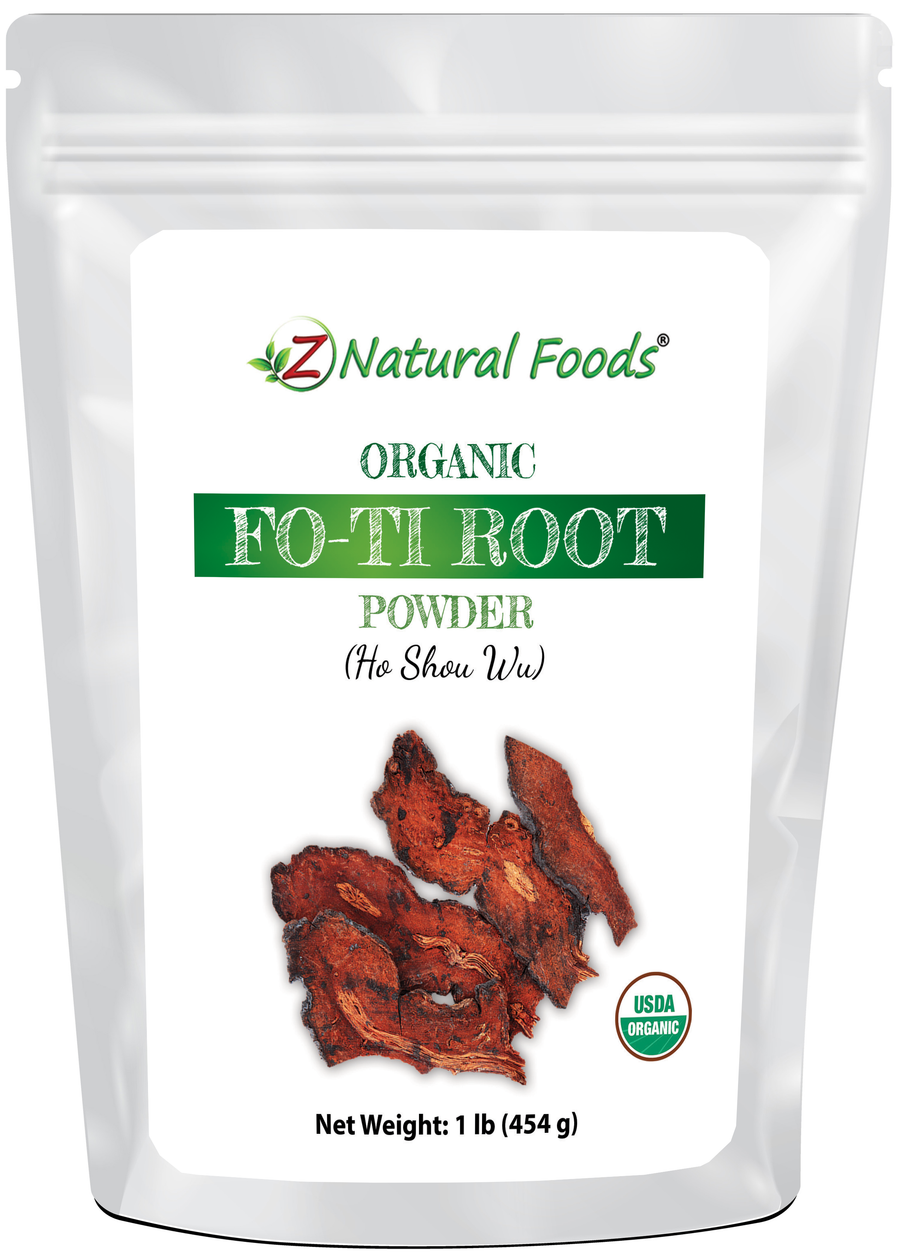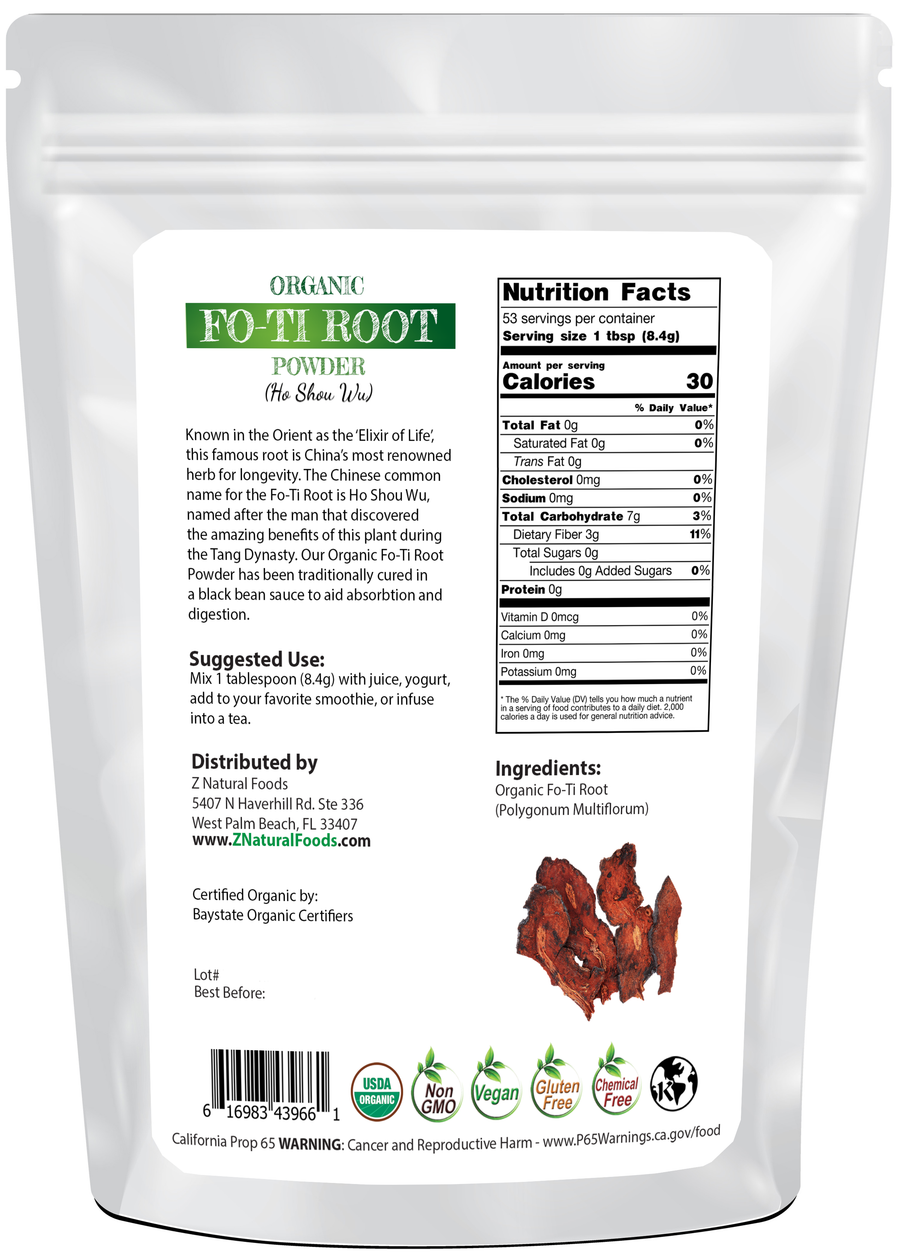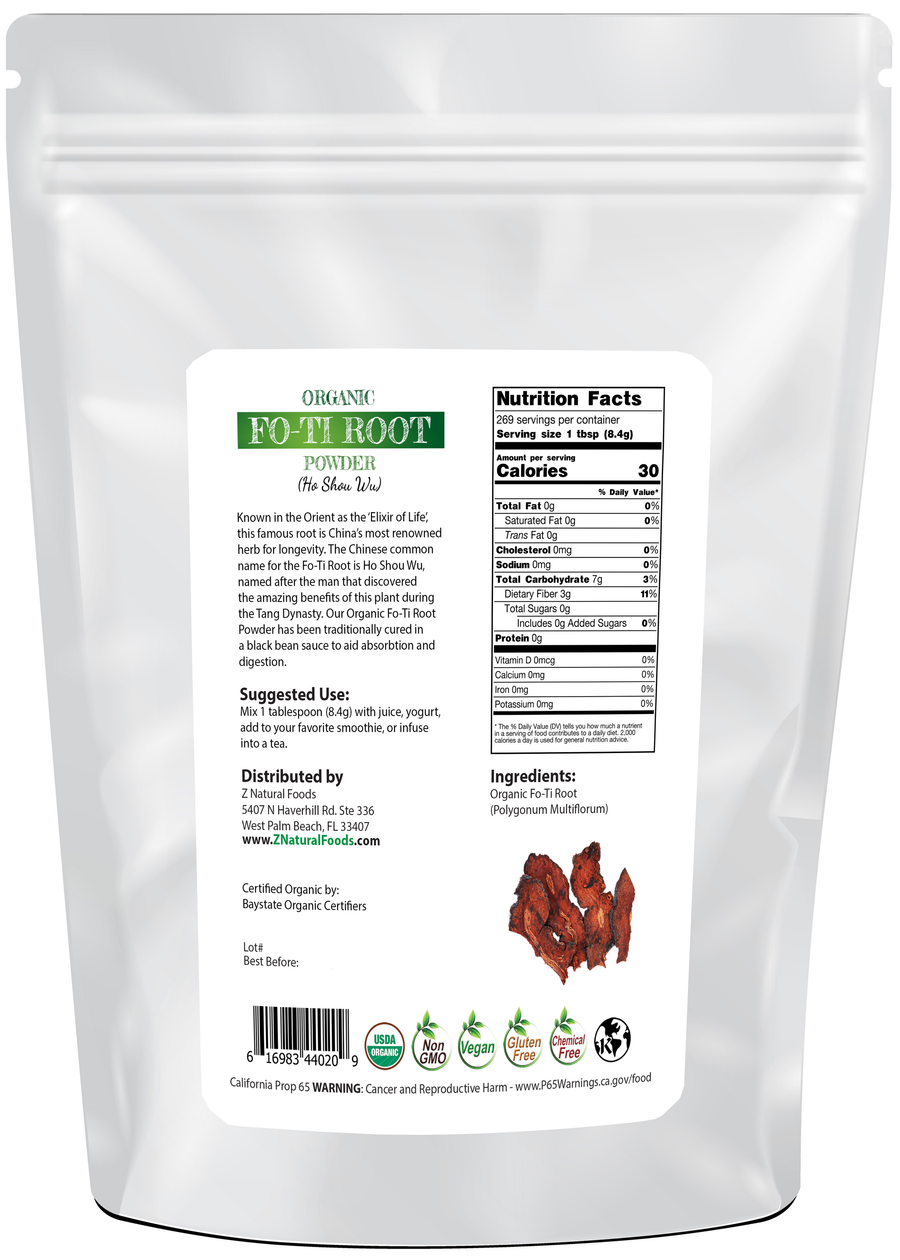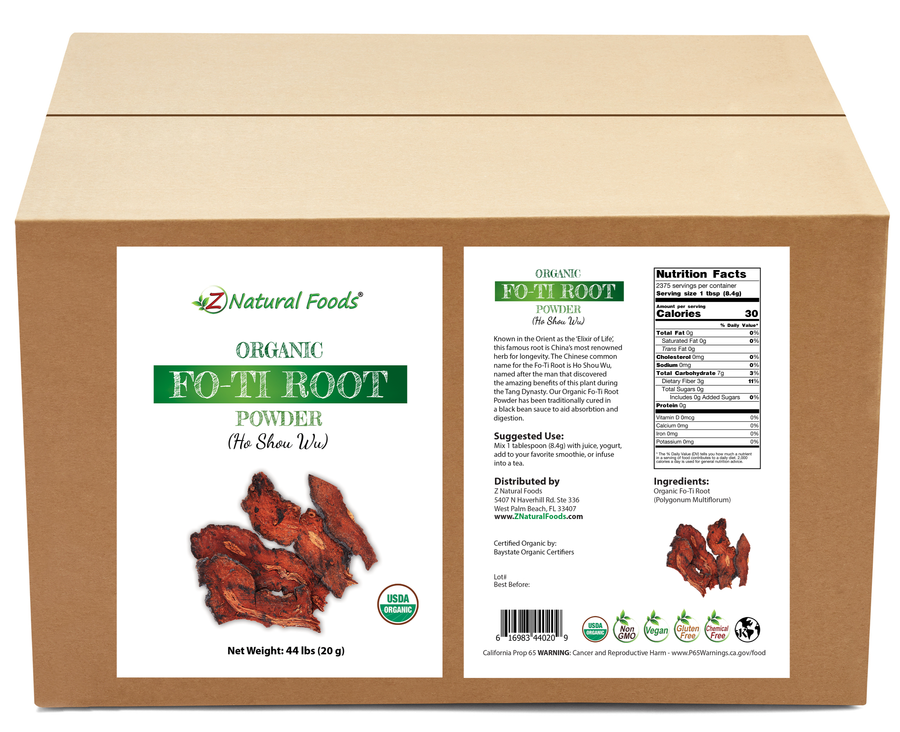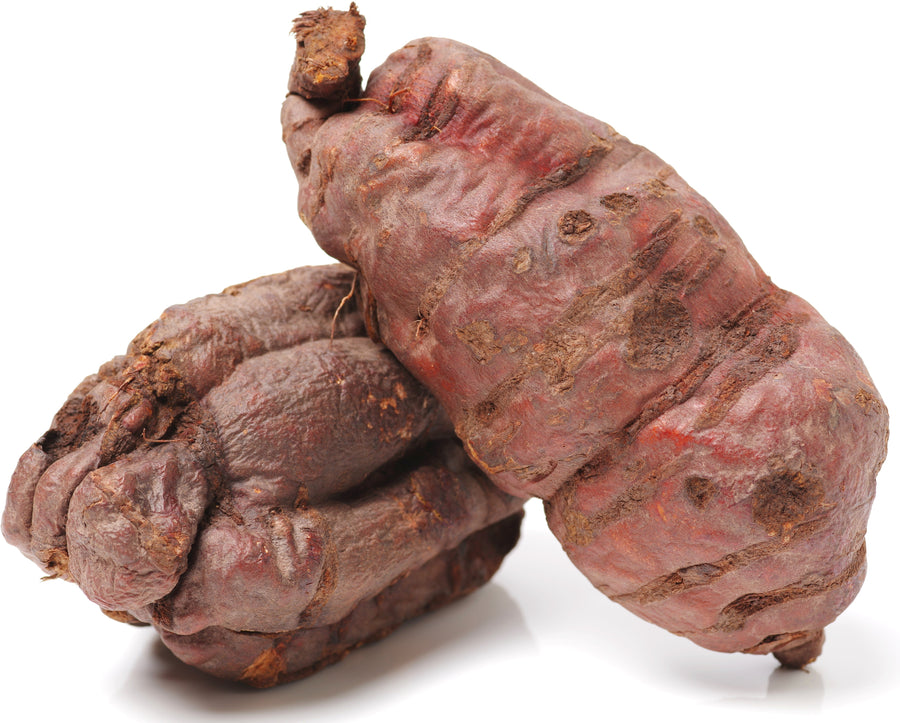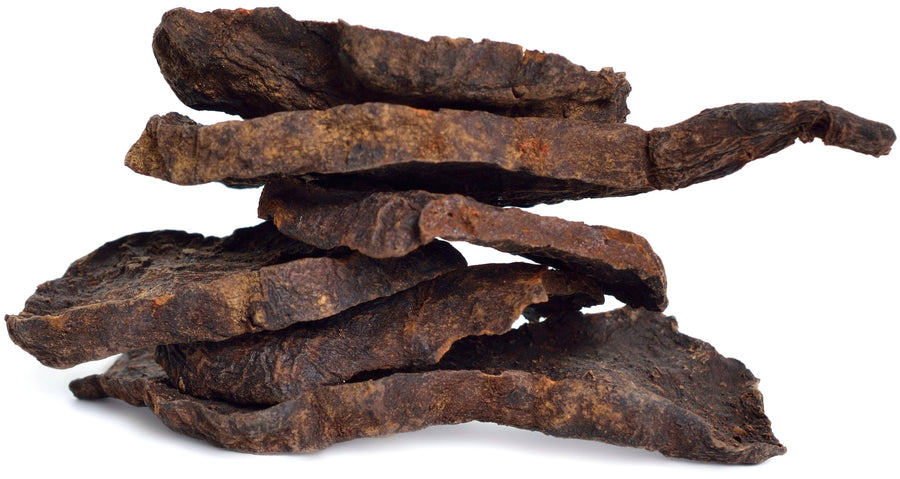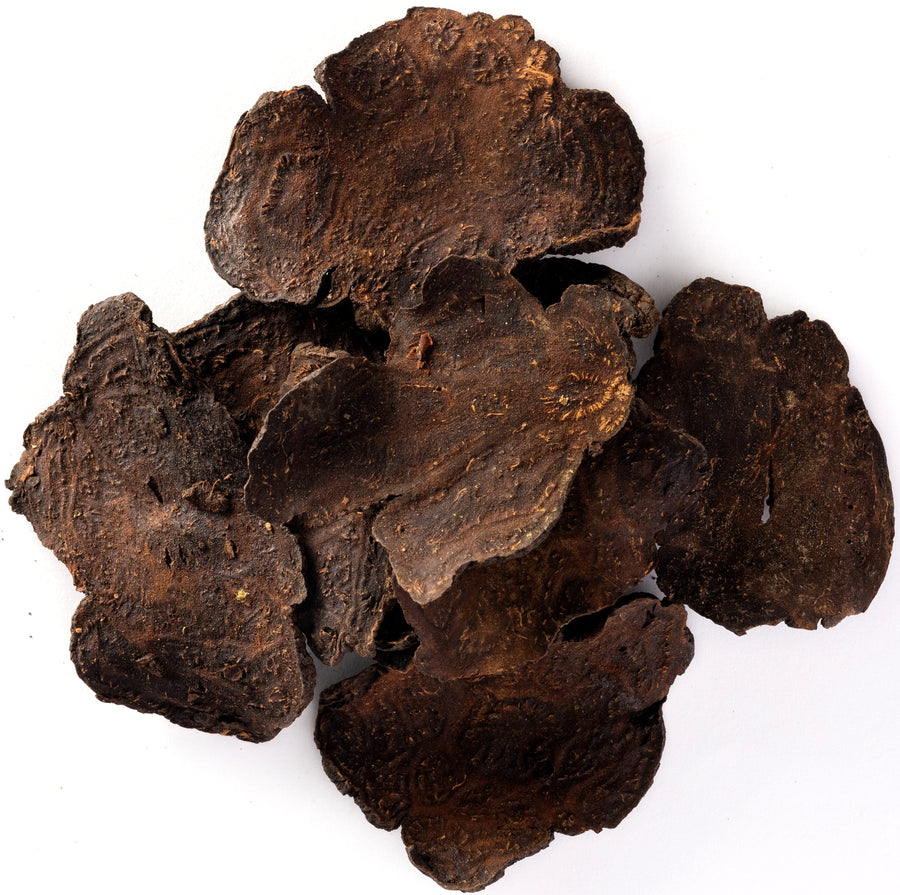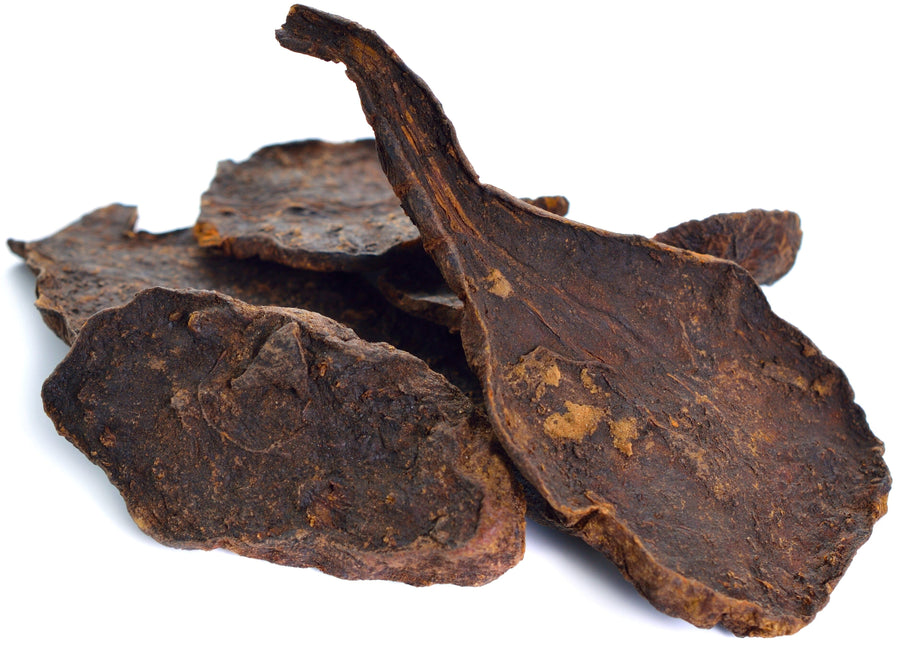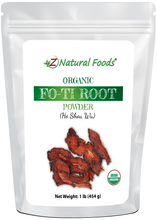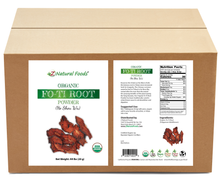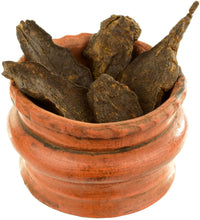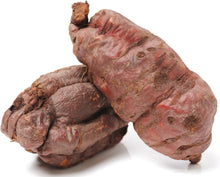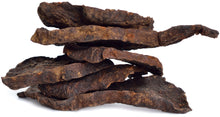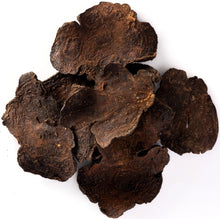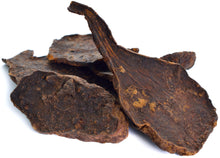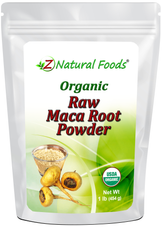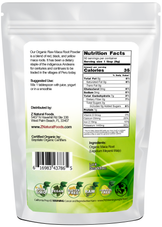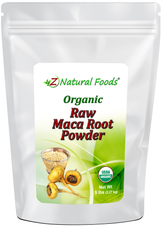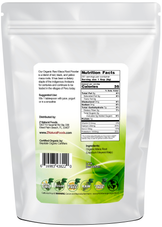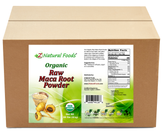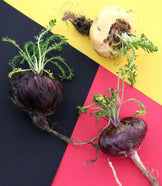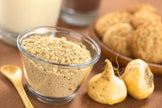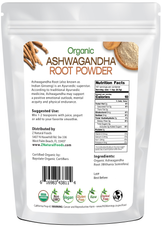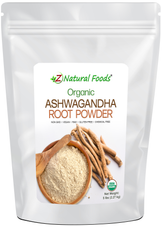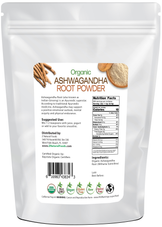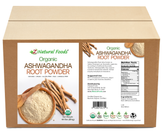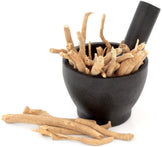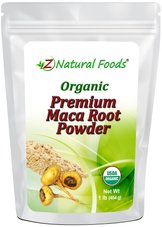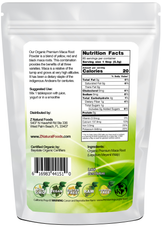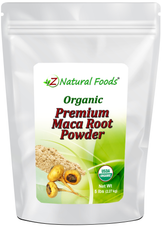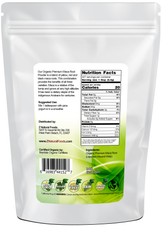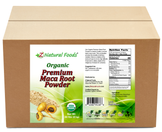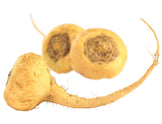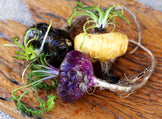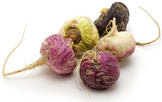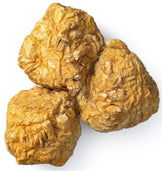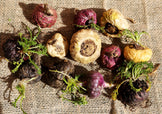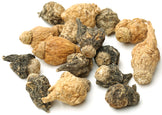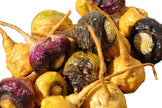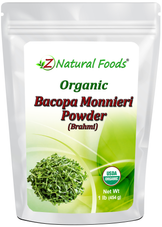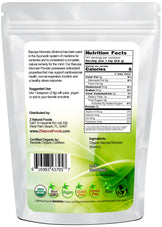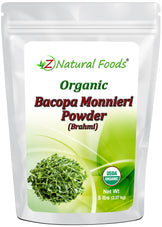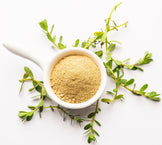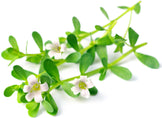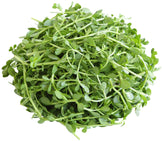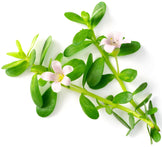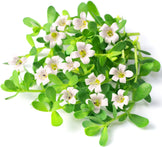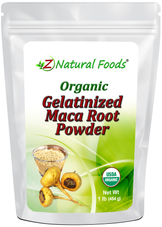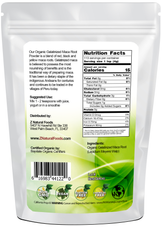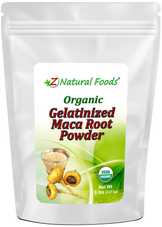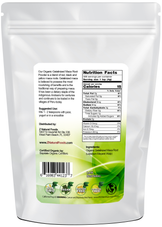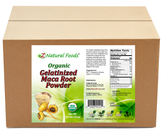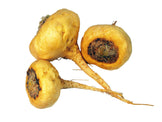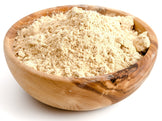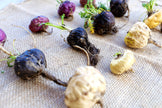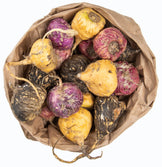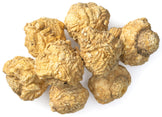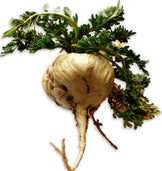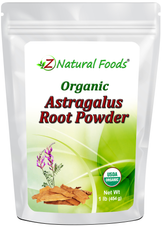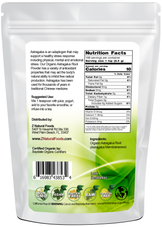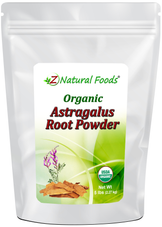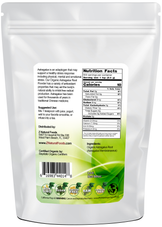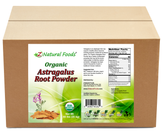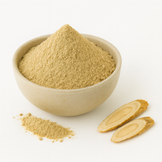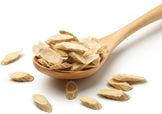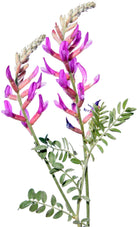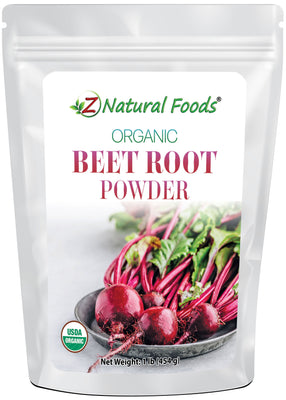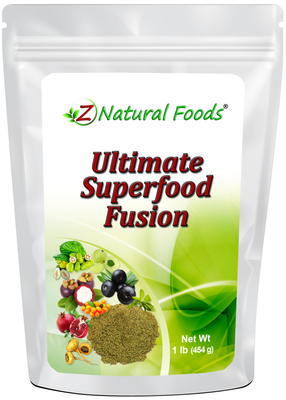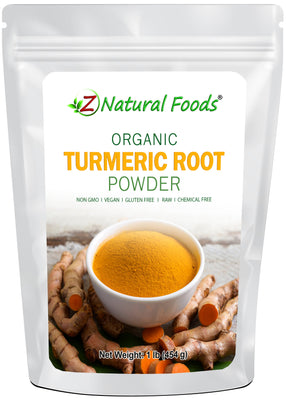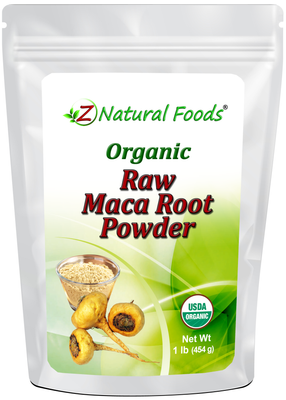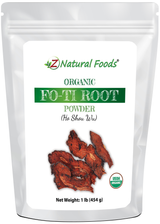About Product
Organic Fo-Ti Root Powder is made from the dried root of the fo-ti plant, also known as he shou wu. With its earthy flavor and fine texture, it can be enjoyed as a warm tea or blended into smoothies and herbal recipes.
Convenient and shelf-stable, this versatile powder has a long tradition of use in Eastern cuisines and preparations. It’s a simple way to explore the unique taste of fo-ti in everyday routines.
Some research suggests that Fo-ti may contain the following constituents:
- Minerals: Magnesium, Phosphorus, Zinc, Copper, Manganese, Selenium, Chromium
- Vitamins: Vitamin C, Thiamin, Riboflavin,
- Phospholipids: Lecithin
- Glucosides: Tetrahydroxystilbene
- Phytochemicals: DI-O-Galloylprocyanidin, Galloyl-L-Catechin, Galloyl-L-Epicatechin, Galloyl-Procyanidin-B-1, Chrysophanic-Acid, D-Catechin, D-Epicatechin, Emodin, Rhaponticin, Rhapontin
Fo-Ti Root has been used for its amazing medicinal qualities for thousands of years. This secret of the Orient is now available to you. Rejuvenate your body with our Organic Red Fo-Ti Root powder.
Suggested Use: Mix 1 tablespoon with juice yogurt, add to your favorite or infuse into a tea.
Mixing suggestions: To increase flavor and nutritional profile, combine our whey protein isolate and lucuma powders in a smoothie.
Botanical Name: Polygonum.
Other Names: Red Fo-Ti, Cured Fo-ti, Ho Shou Wu, He Shou Wu, Shou Wu Chih, Kashuu, Chinese Cornbind, Flowery Knotweed, Chinese Cornbind, Chinese Knotweed, Climbing Knotweed, Flowery Knotweed, Fo-Ti Tieng, Multiflora Preparata, Polygonum, Polygonum, Polygonum Multiflorum Thunberg, Radix Polygoni Multiflori, Radix Polygoni Shen Min, Rhizoma, Shen Min, Shou Wu, Shou Wu Pian, Tuber Fleeceflower, Zhihe Shou Wu, Zi Shou Wu.
Parts Used: Fo-Ti Root.
Ingredients: Fo-ti Root and Black Beans.
Origin: Grown and dried in China and packaged with care in Florida, USA.
Certifications: Certified USDA Organic.
How to Maintain Optimum Freshness
- This product is packaged in airtight stand-up, resealable foil pouches for optimum freshness.
- Once opened, push the air out of the pouch before resealing it to preserve maximum potency.
- Keep your powder in a cool, dark, dry place.
This product is 100% natural and minimally processed:
Taste, smell, texture, and color vary from batch to batch. Go here to learn why our products may naturally vary.
The important protections we take to bring you safe and nutritious superfoods:
Please go here to discover the essential steps we take to deliver fresh, quality nutrition.
Bulk Quantities?
Need to order a large quantity of our products? We are happy to help! Please get in touch with our Bulk department to discuss the details.
* Product packaging, pictures, and origin may vary.
Sources & References
1. Bensky D, and Gamble A, Chinese Herbal Medicine: Materia Medica, 1993 rev. ed., Eastland Press, Seattle, WA.
2. Panis B, Wong DR, Hooymans PM, De Smet PAMG, Rosias PPR. Recurrent toxic hepatitis in a Caucasian girl related to the use of Shou-Wu-Pian, a Chinese herbal preparation. J Pediatr Gastroenterol Nutr 2005; 41: 256-8. PubMed Citation (5 year old girl developed jaundice 4 months after being started on Shou Wu Pian [bilirubin 4.9 mg/dL, ALT 1543 U/L, Alk P normal], resolving within 5 weeks and recurring within 4 weeks of restarting, resolving this second time only after 5 months: Case 1).
3. Huang Bingshan and Wang Yuxia, Thousand Formulas and Thousand Herbs of Traditional Chinese Medicine, vol. 1, 1993 Heilongjiang Education Press, Harbin.
4. Hong-Yen Hsu, et al., Oriental Materia Medica: A Concise Guide, 1986 Oriental Healing Arts Institute, Long Beach, CA.
5. Cardenas A, Restrepo JC, Sierra F, Correa G. Acute hepatitis due to shen-min: a herbal product derived from Polygonum multiflorum. J Clin Gastroenterol 2006; 40; 629-32. PubMed Citation (28 year old woman developed fatigue followed by jaundice 8 weeks after starting Shen-Min for hair loss [bilirubin 12.3 mg/dL, ALT 2922 U/L, Alk P 153 U/L], resolving within 4 weeks of stopping the herbal).
6. Liu Zheng Cai, The Mystery of Longevity, 1990 Foreign Language Press, Beijing.
7. Navarro VJ. Herbal and dietary supplement hepatotoxicity. Semin Liver Dis 2009; 29: 373-82. PubMed Citation (Overview of the regulatory environment, clinical patterns, and future directions in research with HDS including traditional Chinese herbal medicines and usnic acid).
8. Ye Dingjiang, et al., Immunopharmacological studies of ho-shou-wu and its preparations, 1987 Bulletin of Chinese Materia Medica 12(3): 21-24.
9. GarcÃa-Cortés M, Borraz Y, Lucena MI, Peláez G, Salmerón J, Diago M, MartÃnez-Sierra MC, et al. Liver injury induced by "natural remedies" an analysis of cases submitted to the Spanish Liver Toxicity Registry. Rev Esp Enferm Dig 2008; 100: 688-95. PubMed Citation (Among 521 cases of drug-induced liver injury submitted to Spanish registry, 13 [2%] were due to herbals, including Camellia sinensis, Cassia angustifolia, kava, valerian, Rhamnus purshianus, fitosoja, biosoja, Aesculus hippocatanum, chitosan, Couterea latifloral).
10. Pharmacopoeia Commission of PRC, Pharmacopoeia of the PRC, (English edition) 1988 People's Medical Publishing House, Beijing.
11. Zhang Enquin (ed. in chief), English-Chinese Rare Chinese Materia Medica, 1990 Publishing House of Shanghai College of Traditional Chinese Medicine, Shanghai.
12. Ernst E. Adulteration of Chinese herbal medicines with synthetic drugs: a systematic review. J Intern Med 2002; 252:107-13. PubMed Citation (Systematic review of literature on adulteration of herbals with conventional medications, in 15 case reports and 2 cases series of 21 patients; included NSAIDs, corticosteroids, benzodiazepines, diuretics and antidiabetic medications, in up to 24% of products).
13. Smith FP and Stuart GA, Chinese Medicinal Herbs, 1973 Georgetown Press, San Francisco, CA.
14. Bensky D and Barolet R, Chinese Herbal Medicine: Formulas and Strategies, 1990 rev. ed., Eastland Press, Seattle, WA.
15. Chalasani N, Fontana RJ, Bonkovsky HL, Watkins PB, Davern T, Serrano J, Yang H, Rochon J; Drug Induced Liver Injury Network(DILIN). Causes, clinical features, and outcomes from a prospective study of drug-induced liver injury in the United States. Gastroenterology 2008; 135: 1924-34. PubMed Citation (Among 300 cases of drug-induced liver disease in the US collected between 2004 and 2008, 9% of cases were attributed to herbals or dietary supplements [HDS] but none specifically to Sho Wu Pian).
16. Hong-Yen Hsu and Chau-Shin Hsu, Commonly Used Chinese Herb Formulas with Illustrations, 1980 rev. ed., Oriental Healing Arts Institute, Long Beach, CA.
17. Cho HC, Min HJ, Ha CY, Kim HJ, Kim TH, Jung WT, Lee OJ, Bae IG. Reactivation of pulmonary tuberculosis in a patient with Polygonum multiflorum Thunb-induced hepatitis. Gut Liver 2009; 3: 52-6. PubMed Citation. (34 year old man developed jaundice 30 days after starting daily use of Polygonum multiflorum tea and extract [bilirubin 25.3 mg/dL, ALT 1452 U/L, Alk P 111 U/L] with neutropenia [and pulmonary tuberculosis], liver injury resolving slowly after stopping herbal product).
18. Chang Minyi, Anticancer Medicinal Herbs, 1992 Hunan Science and Technology Publishing House, Changsha.
19. Pang Minxiang and He Xioahui, Studies on the leukopoietic actions of Polygonum cuspidatum and Huanghuji Mixture, Xinjiang Journal of Materia Medica 1989; 2: 33-35.
20. Seeff LB. Herbal hepatotoxicity. Clin Liver Dis 2007; 11: 577-96. PubMed Citation (Review of herbal-induced hepatotoxicity, with a review of Chinese herbal medicines such as Chaso, Onshido, Sho-saiko-to, Jin Bu Huan, Ma Huang and Shou Wu Pian).
21. Chen Keji and Zhang Wenpeng, Advances on antiaging herbal medicines in China, Abstracts of Chinese Medicine 1987; 1(2): 309-330.
22. Furukawa M, Kasajima S, Nakamura Y, Shouzushima M, Nagatani N, Takinishi A, Taguchi A, et al. Toxic hepatitis induced by show-wu-pian, a Chinese herbal preparation. Intern Med 2010; 49: 1537-40. PubMed Citation (53 year old Japanese woman developed fatigue after taking Shou Wu Pian for 8 months [bilirubin 1.2 mg/dL, ALT 417 U/L, Alk P 1425 U/L, ANA 1:320], resolving within 2 months of stopping).
23. Pan Hongping, Wang Hong, and He Tingcai, Processed root tuber of Polygonum multiflorum on SOD and LPO levels in mice, China Journal of Chinese Materia Medica 1993; 18(6): 344.
24. Lien EJ, et al., Longevity-promoting agents: a survey, International Journal of Oriental Medicine 1992; 17(4): 177-186.
25. Unschuld PU, Medicine in China: History of Pharmaceutics, 1986 University of California Press, Berkeley, CA.
26. Zimmerman HJ. Unconventional drugs. Miscellaneous drugs and diagnostic chemicals. In, Zimmerman, HJ. Hepatotoxicity: the adverse effects of drugs and other chemicals on the liver. 2nd ed. Philadelphia: Lippincott,1999: pp. 731-4. (Expert review of hepatotoxicity published in 1999; hepatotoxicity of Chinese herbal products and teas are discussed generally without focus on Jin Bu Huan).
27. Da Liu, Taoist Health Exercise Book, 1983 Putnam Publishing Group, New York.
28. But PPH, Tomlinson B, and Lee KL, Hepatitis related to the Chinese medicine Shou-wu-pian manufactured from Polygonum multiflorum, Veterinary and Human Toxicology 1996; 38(4): 280-282.
29. Oerter Klein K, Janfaza M, Wong JA, et al. Estrogen bioactivity in fo-ti and other herbs used for their estrogen-like effects as determined by a recombinant cell bioassay. J Clin Endocrinol Metab. 2003 Sep;88(9):4077-9. Comment in: J Clin Endocrinol Metab. 2003 Sep;88(9):4075-6.
30. Shu-Ming Hou, et al. Chinese Medicine News, 1985, (4) : 25.
31. Yu-Hua Shi, et al. Shanghai TCM Magazine, 1986, (3) 46.
32. Hong-Bin Zhao, et al. Shan Dong TCM Magazine, 1983, (4) : 41.
33. Wang YP, Shi B, Chen YX, Su J, Jiang CF, Xie WF. Drug-induced liver disease: an 8 year study of patients from one gastroenterological department. J Digest Dis 2009; 10: 195-200. PubMed Citation (30 patients with drug-induced liver disease seen at a single medical university in Shanghai between 2000-2008, of which 12 were attributed to Chinese herbs, but specific agents not discussed, 9 were jaundiced, 6 hepatocellular, 3 cholestatic and 2 mixed).
34. Chun-Ming Yao, et al. Geriatric Medicine Magazine, 1984, (1) : 26.
35. Li Shuang, Xiao Hong Gu, Chi Tang Ho, Jian Tang. Stilbene Glycosides from the roots of Polygonum multiflorum Thunb and their in vitro antioxidant activities. Journal of Food Lipids 13 (2), 131"“144. Volume 13 Issue 2 Page 131 - June 2006.
36. Bing Zheng, et al. Gerontology Magazine, 1990, 10 (5) : 306.
37. Hui-Min Peng, et al. Chinese Medicine Pharmacology and Clinical Application, 1989, 5 (3) : 19.
38. Ti-Ren Shi, et al. Chinese Medicine Journal, 1989, 4 (2) :104.
39. Acute hepatitis due to shen-min: a herbal product derived from Polygonum multiflorum. Author(s):Cárdenas A,Restrepo JC,Sierra F,Correa G Citation: Journal of clinical gastroenterology, August 2006, vol./is. 40/7(629-32), 0192-0790.
40. Gao-Qin He, et al. Chinese Medicine Pharmacology and Clinical Application, 1987, 3 (4) :41.
41. Bin Zhao, et al. Chinese Patent Medicine Research, 1984, (10) : 6.
42. Yoshiyuki Kimura, et al. Planta Med, 1983, 49 (1) : 51.
43. But PP, Tomlinson B, Lee KL. Hepatitis related to the Chinese medicine Shou-wu-pian manufactured from Polygonum multiflorum. Vet Human Toxicol 1996; 38: 280-2. PubMed Citation (31 year old woman from Hong Kong developed jaundice several weeks after starting Shou Wu Pian for hair loss [bilirubin 4.0 rising to 6.1 mg/dL, ALT 870 U/L, Alk P 108 U/L], resolving within 3 weeks of stopping).
44. Department of Food and Nutrition, Providence University, Taiwan.
45. [Blood lipid-regulation of stilbene glycoside from polygonum multiflorum] authors: Gao X,Hu YJ,Fu LC, sitation: Zhongguo Zhong yao za zhi = Zhongguo zhongyao zazhi = China journal of Chinese materia medica, February 2007, vol./is. 32/4(323-6), 1001-5302.
46. Ding-Jiang Ye, et al. Traditional Chinese Medicine Bulletin, 1987, 12 (3) : 149.
47. Bae SH, Kim DH, Bae YS, Lee KJ, Kim DW, Yoon JB, Hong JH, Kim SH. [Toxic hepatitis associated with Polygoni multiflori]. Korean J Hepatol 2010; 16: 182-6. PubMed Citation (54 year old Korean woman developed fatigue 1 month after starting Shou Wu [ALT 1136 U/L, Alk P 324 U/L], resolving rapidly but recurring upon reexposure).
48. Foster S, Yue CX. Herbal Emissaries: Bringing Chinese Herbs to the West. Rochester, VT: Healing Arts Press, 1992, 79"“85.
49. Battinelli L, Daniele C, Mazzanti G, Mastroianni CM, Lichtner M, Coletta S, Costantini S. New case of acute hepatitis following the consumption of Shou Wu Pian, a Chinese herbal product derived from Polygonum multiflorum. Ann Intern Med 2004; 140: W30. PubMed Citation (78 year old man developed jaundice 1 month after starting Shou Wu Pian for chronic prostatitis [bilirubin 25.5 mg/dL, ALT 1276 U/L, Alk P 409 U/L], resolving rapidly upon stopping).
50. Foster S, Yue CX. Herbal Emissaries: Bringing Chinese Herbs to the West. Rochester, VT: Healing Arts Press, 1992, 79"“85.
51. [Progress of study on brain protective effect and mechanism of Polygonum multiflorum] Author(s): Wang W,Wang DQ Citation: Zhongguo Zhong xi yi jie he za zhi Zhongguo Zhongxiyi jiehe zazhi = Chinese journal of integrated traditional and Western medicine / Zhongguo Zhong xi yi jie he xue hui, Zhongguo Zhong yi yan jiu yuan zhu ban, October 2005, vol./is. 25/10(955-9), 1003-5370.
52. Foster S. Herbal Renaissance. Layton, Utah: Gibbs-Smith Publisher, 1993, 40"“1.
53. Laird AR, Ramchandani N, deGoma EM, Avula B, Khan IA, Gesundheit N. Acute hepatitis associated with the use of an herbal supplement(Polygonum multiflorum) mimicking iron-overload syndrome. J Clin Gastroenterol 2008; 42: 861-2. PubMed Citation (35 year old man developed jaundice "several months" after starting "NuHair" [containing Polygonum multiflorum] for hair loss [bilirubin 4.6 rising to 13.7 mg/dL, ALT 2714 U/L, Alk P 137 U/L, INR 1.3], resolving 4 months after stopping).
54. Foster S, Yue CX. Herbal Emissaries: Bringing Chinese Herbs to the West. Rochester, VT: Healing Arts Press, 1992, 79"“85.
55. Carlsson C. Herbs and hepatitis. Lancet 1990; 336: 1068. PubMed Citation (Analysis of laboratory results from 395 patients found higher ALT levels among 53 patients taking herbals [55 U/L] than among those who did not [12 U/L]).
56. Bone K. Clinical Applications of Ayurvedic and Chinese Herbs. Warwick, Australia: Phytotherapy Press, 1996, 49"“51.
57. Jung KA, Min HJ, Yoo SS, Kim HJ, Choi SN, Ha CY, Kim HJ, et al. Drug-Induced Liver Injury: Twenty five cases of acute hepatitis following ingestion of Polygonum multiflorum Thunb. Gut Liver 2011 ; 5: 493-9. PubMed Citation (Case series of 25 patients with suspected hepatotoxicity from Shou Wu [Polygonum multiflorum] seen between 2007 and 2009 at a single Korean hospital: ages 24 to 65 years, presenting with jaundice after taking herbal as a tea or liquid extract for 2 to 180 days [bilirubin 1.6-32.9 mg/dL, ALT 271-1706 U/L, Alk P 81-465 U/L], injury pattern being hepatocellular [n=18] or mixed [n=7], liver biopsies showing acute hepatocellular injury, resolving in most, one died and one underwent liver transplantation, one had recurrence on re-exposure).
58. Foster S. Herbs for Your Health. Loveland, CO: Interweave Press, 1996, 40"“1.
59. But PP, Tomlinson B, Lee KL. Hepatitis related to the Chinese medicine Shou-wu-pian manufactured from Polygonum multiflorum. Vet.Hum.Toxicol. 1996;38(4):280-282.
60. Chan YC, Wang MF, Chang HC. Polygonum multiflorum extracts improve cognitive performance in senescence accelerated mice. Am.J.Chin Med. 2003;31(2):171-179.
61. Liu LU, Schiano TD. Hepatotoxicity of herbal medicines, vitamins and natural hepatotoxins. In, Kaplowitz N, DeLeve LD, eds. Drug-induced liver disease. 2nd ed. New York: Informa Healthcare USA, 2007, pp. 733-54. (Review of hepatotoxicity of herbal and dietary supplements [HDS] published in 2007; Chinese and other Asian herbal medicines and teas discussed, including ma huang, shou wu pian, ba jiao lian, jin bu huan, breynia and syo-saiko-to).
62. Chan YC, Wang MF, Chen YC, et al. Long-term administration of Polygonum multiflorum Thunb. reduces cerebral ischemia-induced infarct volume in gerbils. Am.J.Chin Med. 2003;31(1):71-77.
63. Neuroprotective effects of Polygonum multiflorum on nigrostriatal dopaminergic degeneration induced by paraquat and maneb in mice. Author(s):Li X,Matsumoto K,Murakami Citation: Pharmacology, biochemistry.
64. Chen J. [An experimental study on the anti-senility effects of shou xing bu zhi]. Zhong.Xi.Yi.Jie.He.Za Zhi. 1989;9(4):226-7, 198.
65. Horikawa, K., Mohri, T., Tanaka, Y., and Tokiwa, H. Moderate inhibition of mutagenicity and carcinogenicity of benzo[a]pyrene, 1,6-dinitropyrene and 3,9-dinitrofluoranthene by Chinese medicinal herbs. Mutagenesis 1994;9(6):523-526.
66. Liu C, Zhang Q, Lin J. [Effect of the root of Polygonum multiflorum Thunb. and its processed products on fat accumulation in the liver of mice]. Zhongguo Zhong.Yao Za Zhi. 1992;17(10):595-6, 639.
67. Mazzanti G, Battinelli L, Daniele C, et al. New case of acute hepatitis following the consumption of Shou Wu Pian, a Chinese herbal product derived from Polygonum multiflorum. Ann.Intern.Med. 4-6-2004;140(7):W30.
68. Polygonum multiflorum extracts improve cognitive performance in senescence accelerated mice. Author(s): Chan YC,Wang MF,Chang HC Citation: The American journal of Chinese medicine, 2003, vol./is. 31/2(171-9), 0192-415X.
69. Oerter Klein K, Janfaza M, et al. Estrogen bioactivity in fo-ti and other herbs used for their estrogen-like effects as determined by a recombinant cell bioassay. J Clin Endocrinol.Metab 2003;88(9):4077-4079.
70. Park GJ, Mann SP, Ngu MC. Acute hepatitis induced by Shou-Wu-Pian, a herbal product derived from Polygonum multiflorum. J.Gastroenterol.Hepatol. 2001;16(1):115-117.
71. Unger M, Frank A. Simultaneous determination of the inhibitory potency of herbal extracts on the activity of six major cytochrome P450 enzymes using liquid chromatography/mass spectrometry and automated online extraction. Rapid Commun.Mass Spectrom. 2004;18(19):2273-2281.
72. Zhang CZ, Wang SX, Zhang Y, et al. In vitro estrogenic activities of Chinese medicinal plants traditionally used for the management of menopausal symptoms. J Ethnopharmacol 4-26-2005;98(3):295-300.
73. Harvard University Flora of China: Fallopia multiflora Var. angulata, A New Combination in the Polygonaceae from China.
74. Journal of Clinical Endocrinology and Metabolism: Estrogen Bioactivity in Fo-Ti and Other Herbs Used for Their Estrogen-Like Effects as Determined by a Recombinant Cell Bioassay.
75. Journal of Agricultural and Food Chemistry: Activation of the Ah Receptor by Extracts of Dietary Herbal Supplements, Vegetables, and Fruits.
76. Chitturi S, Farrell GC. Hepatotoxic slimming aids and other herbal hepatotoxins. J Gastroenterol Hepatol 2008; 23: 366-73. PubMed Citation (Review of hepatotoxicity of herbal medications focusing upon those used for weight loss, including nitrosofenfluramine, usnic acid, ephedra, germander, skullcap and green tea; other herbs discussed include Shou Wu Pian).
77. Journal of Dietary Supplements: Resveratrol: Potential as Anticancer Agent.
78. Long-term administration of Polygonum multiflorum Thunb. reduces cerebral ischemia-induced infarct volume in gerbils Author(s): Chan YC,Wang MF,Chen YC,Yang DY,Lee MS,Cheng FC Citation: The American journal of Chinese medicine, 2003, vol./is. 31/1(71-7), 0192-415X.
79. Anti-Aging Therapeutics, Volume 12: A4m American Academy.
80. The radical scavenging effects of stilbene glucosides from Polygonum multiflorum Author(s): Ryu G,Ju JH,Park YJ,Ryu SY,Choi BW,Lee BH Citation: Archives of pharmacal research, October 2002, vol./is. 25/5(636-9), 0253-6269.
81. Stickel F, Kessebohm K, Weimann R, Seitz HK. Review of liver injury associated with dietary supplements. Liver Int 2011; 31: 595-605. PubMed Citation. (Review of current understanding of liver injury from herbals and dietary supplements focusing upon herbalife and hydroxycut products, green tea, usnic acid, Noni juice, Chinese herbs, vitamin A and anabolic steroids: Shou Wu Pian not discussed).
82. Alternative Medicine Back to Nature: A J Morgan.
83. But PP et al. "Hepatitis related to the Chinese medicine Shou-wu-pian manufactured from Polygonum multiflorum." Vetinary and Human Toxicology. 38.4 (1996):280-2.
84. Li RW et al. "Anti-inflammatory activity of Chinese medicinal vine plants". Journal of Ethnopharmacology. 85.1 (2003):61-7.
85. De Smet PAGM. Herbal remedies. N Engl J Med 2002; 347: 2046-56. PubMed Citation (Review of status and difficulties of herbal medications including lack of standardization, federal regulation, contamination, safety, hepatotoxicity and drug-herb interactions; specific discussion of 4 herbs with therapeutic promise: ginkgo, hawthorn, saw palmetto and St. John's wort).
86. Mazzanti G et al. "New case of acute hepatitis following the consumption of Shou Wu Pian, a Chinese herbal product derived from Polygonum multiflorum". 140.7(2004):W30.
87. An extract of Polygonum multiflorum protects against free radical damage induced by ultraviolet B irradiation of the skin. Author(s): Hwang IK, Yoo KY, Kim DW, Jeong SJ, Won CK, Moon WK, Kim YS, Kwon DY, Won MH, Kim DW Citation: Brazilian journal of medical and biological research = Revista brasileira de pesquisas medicas e biologicas / Sociedade Brasileira de Biofisica ... [et al.], September 2006, vol./is. 39/9(1181-8), 0100-879X Publication Date: September 2006.
88. Park GJ et al. "Acute hepatitis induced by Shou-Wu-Pian, a herbal product derived from Polygonum multiflorum". Journal of Gastroenterology & Hepatology. 16.1 (2001):115-7.
89. Yang PY et al. "Reduction of atherosclerosis in cholesterol-fed rabbits and decrease of expressions of intracellular adhesion molecule-1 and vascular endothelial growth factor in foam cells by a water-soluble fraction of Polygonum multiflorum". Journal of Pharmacology Sciences. 99.3 (2005):294-300.
90. Zhang CZ et al. "In vitro estrogenic activities of Chinese medicinal plants traditionally used for the management of menopausal symptoms". Journal of Ethnopharmacology. 98.3 (2005):295-300.
91. But PP, Tomlinson B, Lee KL. Hepatitis related to the Chinese medicine Shou-wu-pian manufactured from Polygonum multiflorum. Vet Hum Toxicol 1996;38:280-2.
92. Cardenas A, Restrepo JC, Sierra F, Correa G. Acute hepatitis due to shen-min: a herbal product derived from Polygonum multiflorum. J Clin Gastroenterol 2006;40:629-32.
93. Covington TR, et al. Handbook of Nonprescription Drugs. 11th ed. Washington, DC: American Pharmaceutical Association, 1996.
94. Jung KA, Min HJ, Yoo SS, et al. Drug-Induced Liver Injury: Twenty Five Cases of Acute Hepatitis Following Ingestion of Polygonum multiflorum Thunb. Gut Liver 2011;5(4):493-9.
95. Laird AR, Ramchandani N, deGoma EM, et al. Acute hepatitis associated with the use of an herbal supplement (Polygonum multiflorum) mimicking iron-overload syndrome. J Clin Gastroenterol 2008;42:861-2.
96. Mazzanti G, Battinelli L, Daniele C, et al. New case of acute hepatitis following the consumption of Shou Wu Pian, a Chinese herbal product derived from Polygonum multiflorum. Ann Intern Med 2004;140:E589-90.
97. Oerter Klein KO, Janfaza M, Wong JA, Chang RJ. Estrogen bioactivity in Fo-Ti and other herbs used for their estrogen-like effects as determined by a recombinant cell bioassay. J Clin Endocrinol Metab 2003;88:4077-9.
98. Panis B, Wong DR, Hooymans PM, De Smet PA, Rosias PP. Recurrent toxic hepatitis in a Caucasian girl related to the use of Shou-Wu-Pian, a Chinese herbal preparation. J Pediatr Gastroenterol Nutr 2005;41:256-8.
99. Park GJ, Mann SP, Ngu MC. Acute hepatitis induced by Shou-Wu-Pian, a herbal product derived from Polygonum multiflorum. J Gastroenterol Hepatol 2001;16:115-7.
100. Sklar S, et al. Drug therapy screening system. Indianapolis, IN: First Data Bank 99.1-99. 2 eds.
101. UK Medicines and Healthcare Products Regulatory Agency. Polygonum multiflorum and liver reactions. April 2006. Available at: www.mhra.gov.uk/home/idcplg?IdcService= SS_GET_PAGE&useSecondary=true&ssDocName= CON2023590&ssTargetNodeId= 833 (Accessed 10 May 2006).
102. Unger M, Frank A. Simultaneous determination of the inhibitory potency of herbal extracts on the activity of six major cytochrome P450 enzymes using liquid chromatography/mass spectrometry and automated online extraction. Rapid Commun Mass Spectrom 2004;18:2273-81.
103. Young DS. Effects of Drugs on Clinical Laboratory Tests 4th ed. Washington: AACC Press, 1995.
104. Fallopia multiflora". Flora of China.
105. "Fallopia multiflora". Germplasm Resources Information Network.
106. Park GJH, Mann SP, Ngu MC. Acute hepatitis induced by Shou-Wu-Pian, a herbal product derived from Polygonum multiflorum. J Gastroenterol Hepatol 2001; 16: 1062-4. PubMed Citation (46 year old woman developed pruritus and jaundice 2 weeks after starting Shou Wu Pian [bilirubin 12.6 mg/dL, ALT 876 U/L, Alk P 185 U/L], resolving within a month of stopping).
107. Fo-ti aphrodisiacs-info.com
108. Chinese herb fo-ti has hormone-like activity; laboratory tests. By: Mulcahy, Nicholas Publication: OB GYN News Date: Monday, September 1 2003.
109. Effect of polygonum multiflorum on the fluidity of the mitochondria membrane and activity of COX in the hippocampus of rats with Abeta 1-40-induced Alzheimer's disease Author(s): Hou DR, Wang Y, Xue L, Tian Y, Chen K, Song Z, Yang QD citation: Zhong nan da xue xue bao. Yi xue ban = Journal of Central South University. Medical sciences, November 2008, vol./is. 33/11(987-92), 1672-7347.
110. "The Journal of Clinical Endocrinology & Metabolism": Estrogen Bioactivity in Fo-Ti and Other Herbs Used for Their Estrogen-Like Effects as Determined by a Recombinant Cell Bioassay.
111. Institute for Traditional Medicine: Ho-Shou-Wu: What's in an Herb Name?
112. Herbs2000.com: He Shou Wu.
113. Institute for Traditional Medicine: Potential Rare Liver Reactions to He Shou Wu (Polygonum multiflorum).
114. Fleeceflower Root Fo-Ti root Benefits.
115. Teschke R, Wolff A, Frenzel C, Schulze J, Eickhoff A. Herbal hepatotoxicity: a tabular compilation of reported cases. Liver Int 2012; 32: 1543-56. PubMed Citation. (A systematic compilation of all publications on the hepatotoxicity of specific herbals identified 185 publications on 60 different herbs, including two reports of injury due to Shou Wu Pian: Jung [2011] and Panis [2005]).
116. http://www.ars-grin.gov/duke/
* Reviews & Success Stories Disclaimer
Product reviews solely reflect the views and opinions expressed by the contributors and not those of Z Natural Foods. Z Natural Foods does not verify or endorse any claims made in these reviews. Statements have not been evaluated by the FDA and are not intended to diagnose, treat, cure, or prevent any disease or health condition.REFERRAL PROGRAM
Share your personal link to your friends and welcome them with rewards. Claim yours when they make their first purchase.

GIVE
$10 off discount

GET
$10 off discount
Other products in the same category
Beet Root Powder - Organic
$15.39
Ultimate Superfood Fusion
$34.09
